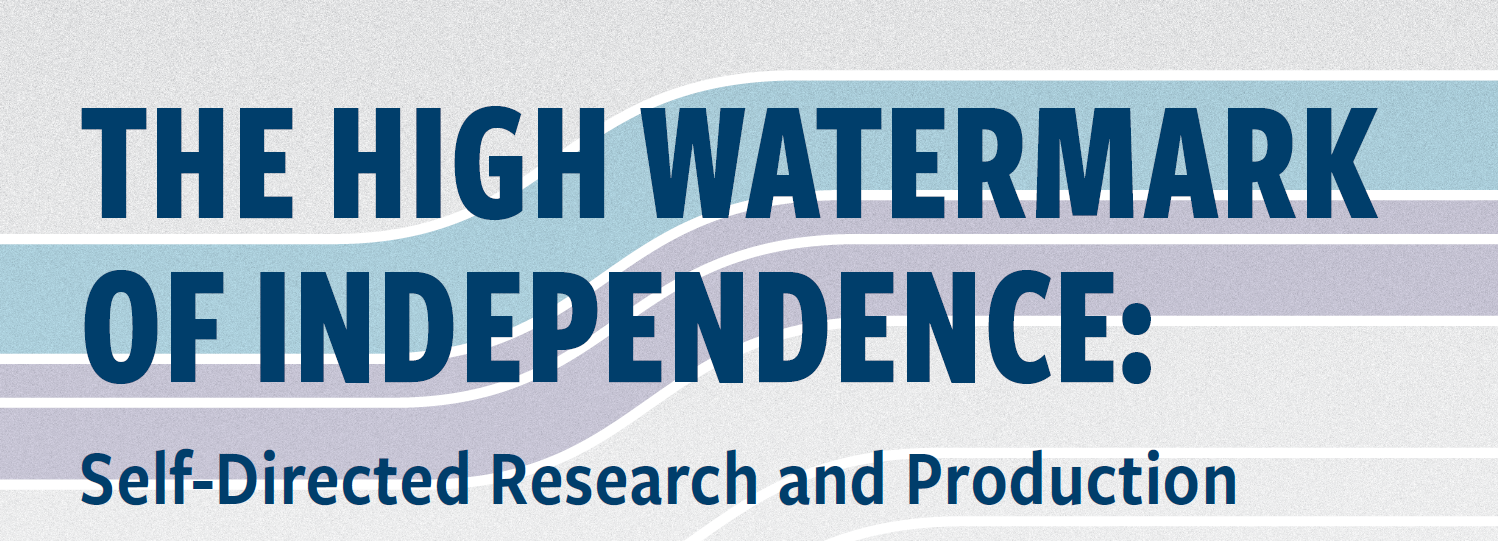
By Krista Henningsen, Academic Design Coordinator
Eastside Prep’s Independent Curriculum provides students a variety of opportunities to engage in independent research and production as they (1) explore topics that are not currently covered in the EPS course offerings or (2) extend research into topics to which they have been previously introduced.
Independent Study | Independent Project (11-12)
Student-designed and fueled
- Eligibility starts in the eleventh-grade spring trimester.
- Students design, propose, and pursue an independent course of study with the support of a faculty mentor.
- Includes six to ten weekly sessions with a faculty mentor.
- Work outside of sessions is preparation for independent research at the collegiate level.
Senior Thesis (12)
Student-designed and fueled
- Eligibility starts with one to two independent studies of exceptional quality in the junior or senior year.
- Students expand the scope of research from a previous independent study, engage in new, original research, or combine both previous and new research.
- Includes five weekly sessions with a faculty mentor.
- Work outside of sessions is preparation for independent research at the collegiate level
Independent Research Spotlights
Seven current seniors describe their experiences in the Eastside
Prep’s Independent Curriculum:
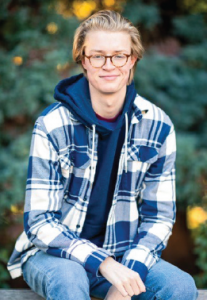 EVAN CARR (’24)
EVAN CARR (’24)
This fall, I designed an independent study with Ms. Sayles, titled “Introduction to Existential Philosophy in Fiction”. I took an English class with Ms. Sayles my sophomore year, in which we read The Stranger by Albert Camus, which I adored for its profound discussion of human purpose, religion, and free will, presented in the form of a novel rather than a scholarly text. As a committed, creative writer, I sought to create an independent study to deepen my knowledge of both the craft of storytelling and a manner of conveying philosophical ideas with real weight in the novel format. For this course, I read Notes from Underground by Fyodor Dostoevsky, Nausea by Jean-Paul Sartre, and The Catcher in the Rye by J.D. Salinger, wrote a significant amount of analysis throughout, and wrapped things up with an essay in which I argued the significance of certain character traits (mainly self-isolation, rebellion, and pains of “heightened consciousness”) in conveying Sartrean existentialist thought. I plan to pursue a Senior Thesis, in which I will write a novella containing many existentialist themes in these texts. The study of philosophy may often be viewed from the outside as frivolous or without practical value, but I would strongly argue there are perhaps no teachings more urgent, empowering, or broadly relevant to life as a human seeking meaning than those of existentialism. I have been greatly impacted by my studies here and seek to continue my reading and serious appreciation for existential thought well into the future.
SOPHIE VERNON (’24)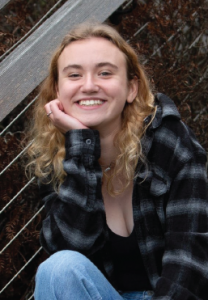
Through the independent study program, I have created my own courses centering on the intersection of film, social justice, and economics. During the fall, I created Female Directors in 1970s Hollywood and combined an artistic examination of dozens of films along with a historical analysis contextualizing the role of women in Hollywood during second-wave feminism. This study culminated in a short film that I directed, taking inspiration from the films I watched juxtaposed with my own experience as an aspiring female filmmaker. This winter, I designed The Politics of International Film, which focuses on the role of filmmaking in South African apartheid. I am beginning to work on a comprehensive paper that will cover many aspects including the impact of apartheid laws on the domestic industry and the role of international films portraying South African apartheid. Both studies have taught me about the importance of independent filmmaking in social movements. I plan to continue down this road in the spring with a senior thesis that delves into the economics of independent production companies and how they have the unique opportunity to make a change. I am grateful to have had this opportunity to create courses tailored to my interests. I hope to use what I have learned about the historical use of film in promoting social justice to continue to create positive change in the future.
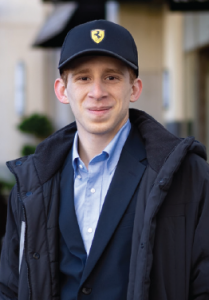 MAHDY KARAM (’24)
MAHDY KARAM (’24)
The motivation behind proposing my Independent Project was straightforward. Being a squash player and a beginner coach in the greater Seattle area, I recognize the challenges of consistently securing quality coaching and enhancing our skills with limited resources. As a programmer, I also understand that coaching involves sophisticated pattern matching, something computers excel at. In the winter of my junior year, I proposed an Independent Project titled “Programming Squash AI Coaching Systems.” That spring, my journey into the world of sports coaching automation began. As my comprehension of players’ requirements and the limitations of conventional coaching expanded, the project grew in breadth and intricacy. My research for this undertaking encompassed a variety of approaches, from inquiring about the most valuable aspects of coaching sessions with fellow squash players to exploring the methodologies employed by coaches. As a part-time coach, I was initially unaware of the many factors that come into play during coaching sessions. It involves keeping track of where your player is succeeding, identifying the weaknesses of your player’s opponent, comprehending player movement, and assessing your player’s strengths. The intricacies of coaching, which may seem simple to us as coaches, include numerous small details that are easily overlooked. Programming a computer to handle all these aspects proved to be more challenging than I had initially anticipated. Assisted by my mentor, Mr. Briggs, and leveraging various external resources, I am (now) on the tail end of developing a fully featured program that players and coaches can use to gain valuable statistical insights relating to their matches. By the end of this spring trimester, I plan to have completed an app to bring this program to the masses. Throughout my college education and beyond, I aspire to deepen my comprehension of the methodologies that computers employ for vision, a fundamental aspect extensively utilized in my program for tasks like monitoring ball and player positions. Furthermore, I have gained valuable insights into machine learning and the development of relevant heuristics that enable the computer to effectively analyze intricate data layers, such as those compiled from a squash match.
 ADDISON AFFLECK (’24)
ADDISON AFFLECK (’24)
For thousands of years, the Nlaka’pamux, Syilx, and Qwidiččaʔa·tx̌ peoples of the Pacific Northwest have used the scarlet, pear-shaped hips of the baldhip rose as beads. The baldhip rose—alongside many of its native relatives—invites us to explore the nuanced relationship between people and place, to dismantle the relegation of plants to margins like “habitat,” “landscape,” or “agriculture” and to center them as more-than human inhabitants of the Anthropocene. To help amplify these narratives, I worked on an independent project throughout my senior year with Mr. Barrager, loquaciously titled “Analyzing Campus Ecology and Biological Impacts.” I got to research a ton of local ethnobotany; interview some local indigenous botanists; analyze our campus landscape; design a landscape plan that improves native plant representation; drive out to Oak Harbor and buy plants; replace invasive butterfly bushes and foreign cotoneasters with native elderberry, bleeding hearts, inside-out flowers, and (of course) baldhip roses; and ultimately watch as a small section of campus began to resemble how EPS land might have actually looked thousands of years ago. I plan to continue studying the restoration zone in the spring and— beyond EPS—botany in college. More than that, I hope to see this native plant garden become a permanent and expanding fixture in the EPS community, a tool that inspires EPS students to interact with the charisma, narratives, and imagination found within local fauna. Perhaps even someday, students will get to pluck berries from the baldhip roses near the Sport Court and admire the scarlet, pear-shaped beads decorating their hands.
 EMMA LORIMER (’24)
EMMA LORIMER (’24)
I am taking an Independent Study entitled “Accusers in Early Modern Witch Hunts.” I am exploring the history of Early Modern European witch hunts, analyzing their circumstances and the impacts of historiography through various theoretical lenses, including Marxism/ Marxist feminism, ecofeminism, traditional feminist theory, and the conception of biopower. Throughout my childhood, narratives around witches and witch hunts fascinated me, from the Salem Witch Trials and The Crucible to European witch hunts while studying medieval Europe and the Protestant Reformation. Additionally, through previous independent studies (on lesbian feminism and Richard Hofstadter’s anti-intellectualism), EPS courses, and faculty support, I have refined and developed interests in feminist philosophy and theology.
In this course, my research began with an overview of early modern Europe and its witch hunts. This resulted in an emphasis on historiography and feminist lenses, as I saw various framings and interpretations of historical circumstances. In the latter part of the course, I have read the author’s work, including Simone de Beauvoir, Micheal Foucault, Friedrich Engels, and Kate Manne, to develop frameworks for understanding witch hunts. I plan to continue this work with a senior thesis in the spring. I will compare traditional historical analyses, emphasizing compounding religious and social factors, with the theoretical lenses framing witch hunts as markers of primitive accumulation, the transition to biopower, and the transformation of women’s roles in Western Europe. Beyond my senior thesis, I believe this deep dive into continental philosophy and feminist theory will provide me with skills and bases of knowledge that will follow me to studying philosophy in college and beyond.
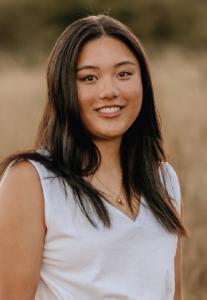 ELYSE LIN (’24)
ELYSE LIN (’24)
“But why?” is a question I frequently pose, much to the occasional frustration of my teachers, parents, and peers. My endless “why” questions, ranging from why the sky is blue to why the gravitational constant is 9.8, reflect my lifelong fascination with understanding the complexities of various issues. Naturally, this curiosity led me to explore the multifaceted topic of poverty, encompassing challenges like food insecurity, homelessness, and a lack of access to quality healthcare and education. In my junior year, I began delving into the root causes of these societal challenges through my independent study, “Investigating the Intersection of Food Deserts, the Food Chain, and Technology.” This exploration seamlessly flowed into my senior year independent study, “The Psychology of Poverty,” as a natural continuation of my prior research. Conducting research for both studies involved interviewing experts and community leaders, reading many scientific journals, and using tools such as the Seattle GIS (Geographic Information System). A few noteworthy findings included the interplay between homelessness and incarceration, the impact of poverty on childhood brain development, and the rippling positive impacts of access to public transportation. As I prepare to write my senior thesis in the spring, I am eager to continue grappling with the complexities of these topics and the learning opportunities they offer. Heading to college next year, I plan to continue asking crucial “why” questions related to poverty and existing societal systems while extending my curiosity to the rest of the world around me. I hope to find innovative solutions for a better future by asking the right questions.
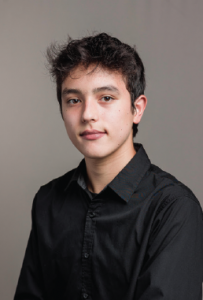 JIAXING BRISBOIS (’24)
JIAXING BRISBOIS (’24)
During an Advanced Biology class in the fall of my junior year, I became fascinated with EGCG (Epigallocatechin Gallate), a natural compound within green tea observed to reverse the neurological effects of Alzheimer’s disease in mice. Yet, when administered to humans, EGCG failed to reproduce those effects. Scientists attributed this finding to the rapid metabolization of the compound within the bloodstream, preventing it from reaching its destination. To solve this issue, I wondered if it would be possible to encapsulate the natural compound within a transport module to prevent it from dissolving before reaching its destination. Searching if such technology existed, I came across nanoparticles, a naturally occurring or chemically synthesized nanosized material with significant application in drug delivery. In my Independent Study, Nanotechnology in Drug Delivery, I explore how using nanoparticles can increase delivery accuracy and minimize the loss of drugs in the bloodstream during transport. I am also investigating the current shortcomings of this technology and attempting to augment current nanoparticle designs using computational modeling.

